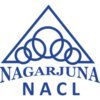Senior Research Chemist
10+ Senior Research Chemist Interview Questions and Answers

Asked in Iol Chemicals & Pharmaceuticals

Q. Suppose we have provided you with an unknown sample for analysis. How would you identify it, and what would be the basis for starting the analysis?
Identify unknown samples through systematic analysis using various techniques and methods.
1. Visual Inspection: Observe color, texture, and physical state (solid, liquid, gas).
2. Solubility Tests: Determine solubility in water or organic solvents to infer polarity.
3. pH Measurement: Use pH indicators to assess acidity or basicity.
4. Spectroscopy: Employ techniques like UV-Vis, IR, or NMR to identify functional groups.
5. Chromatography: Use methods like TLC or HPLC for separat...read more

Asked in SAI Life Sciences

Q. How do you convert an aldehyde to a Wittig reagent?
Aldehydes can be converted to Wittig reagents through a two-step process involving the formation of a phosphonium ylide.
React aldehyde with a phosphonium salt to form a phosphonium ylide
React the phosphonium ylide with an appropriate carbonyl compound to form the Wittig reagent
The Wittig reagent can then be used in a Wittig reaction to form an alkene product
Example: Conversion of benzaldehyde to benzylidene triphenylphosphorane
Senior Research Chemist Interview Questions and Answers for Freshers

Asked in Iol Chemicals & Pharmaceuticals

Q. What is the elution order of polar and non-polar compounds on a polar column?
Elution order on a polar column depends on polarity; non-polar compounds elute first, followed by polar compounds.
In a polar column, non-polar compounds interact less with the stationary phase, leading to faster elution.
Polar compounds form stronger interactions (e.g., hydrogen bonding) with the polar stationary phase, resulting in slower elution.
Example: In reversed-phase chromatography, non-polar compounds like hydrocarbons elute before polar compounds like alcohols.
The elu...read more

Asked in SAI Life Sciences

Q. How does adding n-BuLi and DMF affect the conversion?
n-Buli and DMF can be used to convert certain functional groups through deprotonation and subsequent reactions.
n-Buli is a strong base commonly used for deprotonation reactions.
DMF (dimethylformamide) is a polar aprotic solvent that can facilitate reactions.
The combination of n-Buli and DMF can be used to convert certain functional groups such as alkyl halides to alkyl lithium compounds.
Care must be taken when handling n-Buli due to its pyrophoric nature.

Asked in Iol Chemicals & Pharmaceuticals

Q. If a material has a melting point of 350 degrees, what can we analyze using GC?
GC can analyze volatile compounds; materials with high melting points may require derivatization for effective analysis.
Gas chromatography (GC) is suitable for analyzing volatile compounds.
Compounds with melting points above 350°C may not be directly analyzed by GC.
Derivatization can be used to lower the boiling point of high-melting materials, making them suitable for GC.
Examples of derivatization include converting carboxylic acids to esters or amides.
GC can analyze the pur...read more

Asked in Aragen Life Sciences

Q. What is forced degradation and why do we perform it?
Forced degradation is a stability testing method to assess drug product degradation under stress conditions.
Simulates environmental conditions like heat, light, and humidity to evaluate stability.
Helps identify degradation pathways and products, ensuring drug safety and efficacy.
Guides formulation development by revealing weaknesses in drug stability.
Regulatory requirement for pharmaceuticals to support shelf-life claims.
Example: Exposing a drug to UV light to assess photodeg...read more

Asked in SAI Life Sciences

Q. What is the structure of NBS?
NBS (N-bromosuccinimide) is a chemical compound used as a brominating agent in organic chemistry.
NBS is a white crystalline solid
It is commonly used in organic synthesis to selectively brominate allylic and benzylic positions
NBS is often used in conjunction with a radical initiator like AIBN to generate bromine radicals

Asked in SAI Life Sciences

Q. What is the structure of pyridine?
Pyridine is a heterocyclic aromatic compound with a six-membered ring containing five carbon atoms and one nitrogen atom.
Pyridine has a molecular formula of C5H5N
It is a colorless liquid with a strong odor similar to fish
Pyridine is commonly used as a solvent and precursor in organic synthesis
Share interview questions and help millions of jobseekers 🌟

Asked in Symphony Pharma Life Sciences

Q. Named reaction and conversion of organic reactions
Named reactions are specific organic reactions that have been given a name based on the reaction mechanism or the name of the scientist who discovered it.
Named reactions are commonly used in organic chemistry to describe specific transformations.
Examples include the Diels-Alder reaction, Grignard reaction, and Friedel-Crafts acylation.
Named reactions can be used to predict the products of a reaction based on the starting materials and reaction conditions.

Asked in Iol Chemicals & Pharmaceuticals

Q. How do you handle team management?
Effective team management involves clear communication, support, and fostering a collaborative environment for success.
Establish clear goals: Define team objectives and individual roles to ensure everyone understands their responsibilities.
Encourage open communication: Create an environment where team members feel comfortable sharing ideas and feedback.
Provide support and resources: Ensure team members have the tools and training they need to succeed in their roles.
Recognize ...read more

Asked in TCG Lifesciences

Q. Various NMR solvents and their peaks ?
NMR solvents are crucial for obtaining clear spectra; each solvent has characteristic peaks that aid in identifying compounds.
Deuterated Chloroform (CDCl3): Peak at 7.26 ppm (solvent peak).
Deuterated Dimethyl Sulfoxide (DMSO-d6): Peak at 2.50 ppm.
Deuterated Acetone (acetone-d6): Peak at 2.05 ppm.
Deuterated Water (D2O): Peak at 4.79 ppm.
Deuterated Benzene (C6D6): Peak at 7.16 ppm.

Asked in NACL Industries

Q. Type of catalyst hydrogenation reaction
The type of catalyst used in a hydrogenation reaction depends on the specific reaction conditions and desired outcome.
Catalysts commonly used in hydrogenation reactions include platinum, palladium, and nickel
The choice of catalyst can impact reaction rate, selectivity, and overall efficiency
Different catalysts may be more suitable for specific substrates or reaction conditions

Asked in Indian Air Force

Q. Why do you want to join us?
I am excited to join your team to leverage my expertise in research chemistry and contribute to innovative solutions in your projects.
I have over 10 years of experience in research chemistry, focusing on drug formulation and development.
My previous role involved leading a team that successfully developed a new pharmaceutical compound, which improved patient outcomes.
I am passionate about collaborating with cross-functional teams to drive projects from concept to commercializa...read more

Asked in TCG Lifesciences

Q. What is amidation?
Amidation is the chemical process of forming amides from carboxylic acids and amines.
Involves the reaction of a carboxylic acid with an amine.
Produces an amide and water as byproducts.
Example: Acetic acid + Ammonia → Acetamide + Water.
Can be catalyzed by heat or acid/base catalysts.
Used in the synthesis of pharmaceuticals and agrochemicals.
Interview Questions of Similar Designations
Interview Experiences of Popular Companies








Reviews
Interviews
Salaries
Users

















